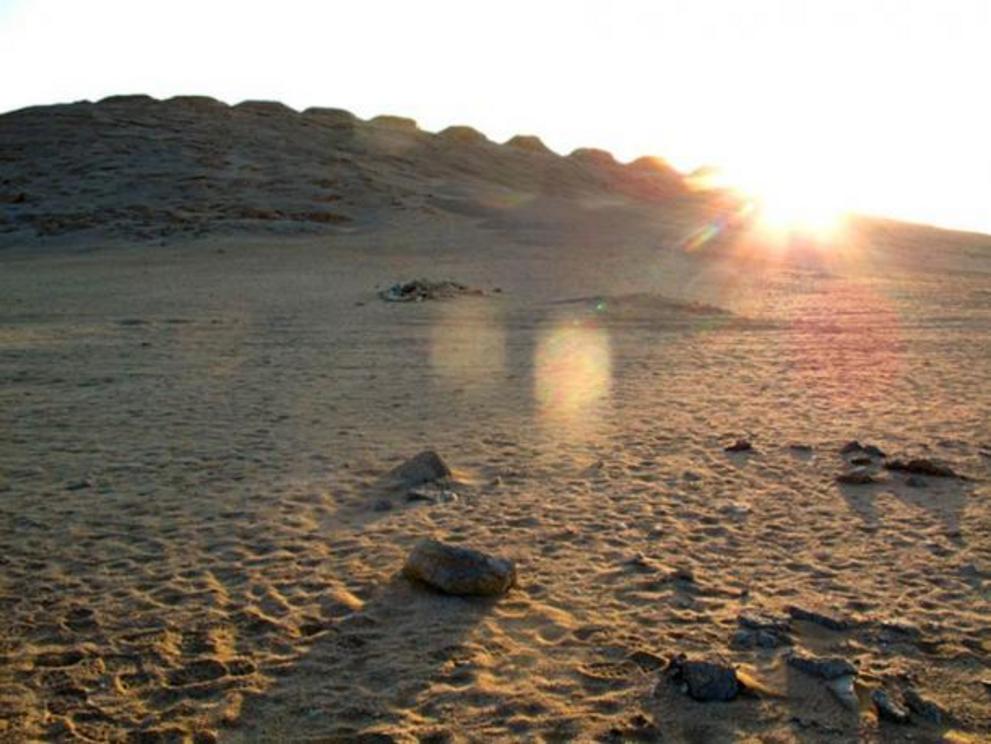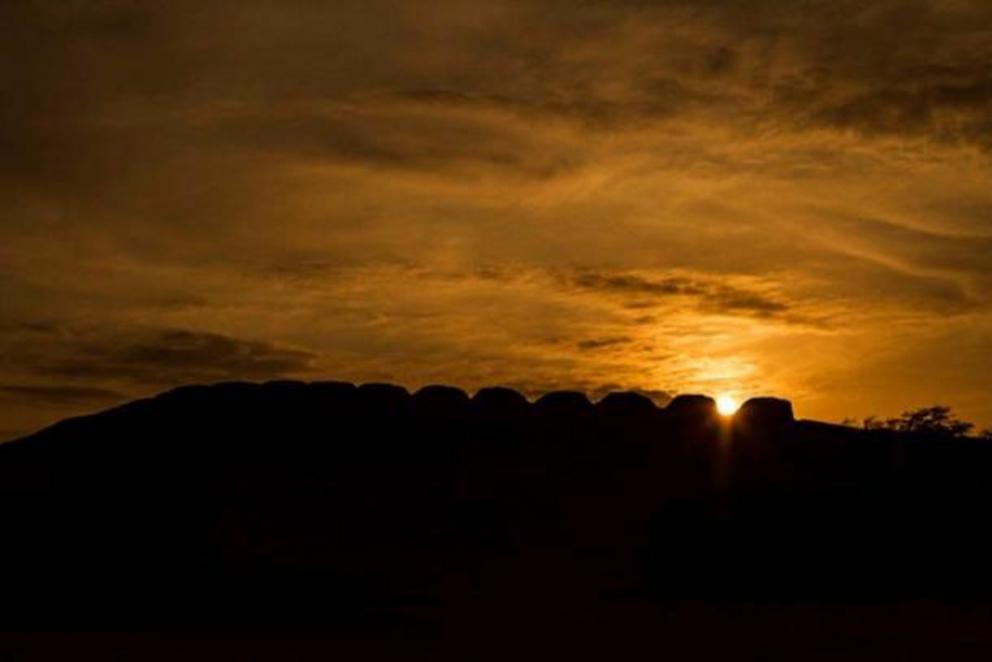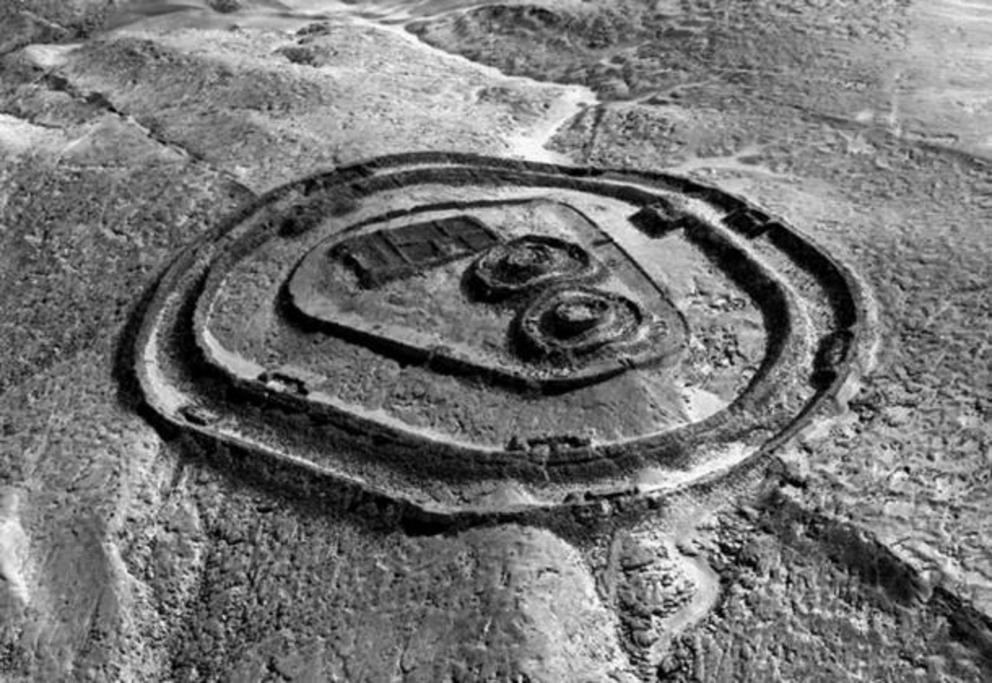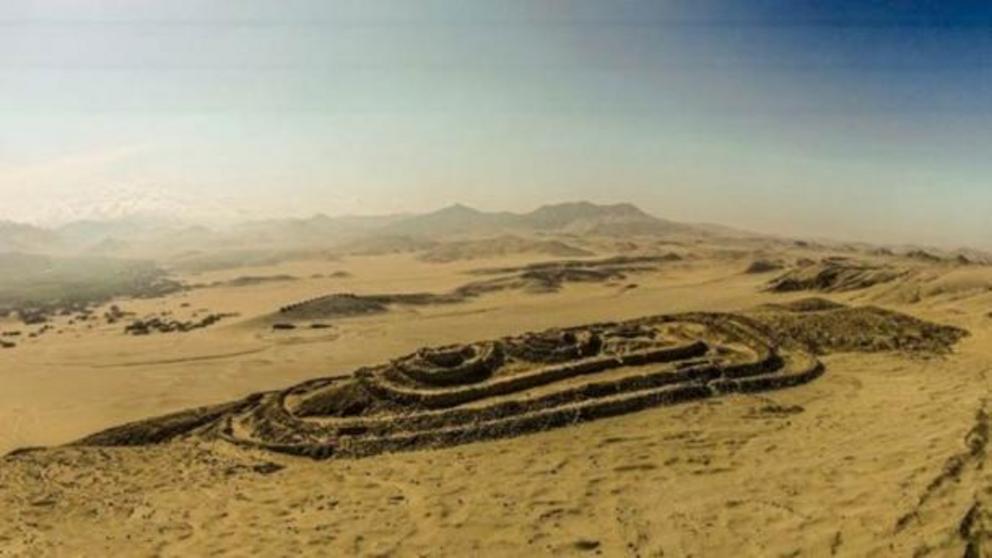Chankillo: the oldest solar observatory in the Americas
Top Image: The thirteen towers and adjacent buildings from the fortified temple at Chankillo, Peru, 2001.
Located in the Peruvian coastal desert at the Casma-Sechin Oasis stands the incredible monumental complex of Chankillo. The archaeological site consists of a fort located on a hilltop and thirteen solar observatory towers, as well as residential and gathering areas. It was built some 2,300 years ago for both practical and ceremonial purposes.
Recognizing the Oldest Solar Observatory in the Americas
Situated between two observation platforms, Chankillo’s thirteen astronomical towers span the entire annual rising and setting arcs of the sun, which shift north and south along the horizon gradually over the course of a year. What makes Chankillo, also known as Chanquillo, so important is the fact that, according to archaeologists, this site is the earliest known solar observatory in the Americas. The Incas, also well known astronomers, observed the sun and the stars, but they did so many centuries later.
 Sunset at the Chankillo towers, 2011.
Sunset at the Chankillo towers, 2011.
UNESCO has just recognized the importance of this ancient site, giving it World Heritage status and calling Chankillo “a masterpiece of human creative genius.” The Chankillo program director, Iván Ghezzi, said that he wasn’t surprised by the decision, but was “truly overwhelmed” by the archaeoastronomical complex receiving the UN agency’s recognition. He told the Guardian :
“It is the only observatory from the ancient world that we know of that is a complete annual solar calendar. The [13] towers are positioned in such a way that they match precisely the movement of the sun throughout the seasonal year from two very well-defined viewing points. This has no parallels anywhere in the Americas or the world.”
Chankillo was Built with Incredible Precision
As Ghezzi suggests, research has shown that the astronomical alignments seen at Chankillo were, and still are, incredibly precise. The towers have been known about for a long time but their astronomical value was not widely realized until Ghezzi and Clive Ruggles undertook detailed research at the site in 2007.
Archaeologists suggest that the inhabitants of Chankillo would have been able to determine the date with an accuracy of +/- two to three days by observing the sunrise/sunset from the correct observational platform. On the winter solstice, the sun would rise behind the furthest tower on the left and then over time, it would rise behind each of the towers in between, until it reached the furthest tower on the right some six months later on the summer solstice, marking the passage of time.
 Solstice in Chankillo, Peru.
Solstice in Chankillo, Peru.
Other ancient sites known for astronomical observatories generally contain only one point of astronomical alignment, which does not provide enough information for an accurate measurement of time over one year.
The towers at Chankillo, which are spaced at intervals between 4.7 and 5.1 meters (15.42-16.73 ft.), vary in shape and size, ranging from 70 to 130 meters (229.66-426.51 ft.) in width and up to 6 meters (19.69 ft.) in height. According to archaeologists, at the time the towers were constructed they were completely flat on top.
The walls of this ancient site were once shiny white, with paintings and figures decorating the monuments. Chankillo’s architectural features include a plaza, the thirteen towers aligned on a ridge, a fortified temple, and defensive walls with false entrances. The structures found at Chankillo were built of shaped stone and mortared walls, a combination that reflects the surroundings of this coastal desert and incredibly beautiful environment in Peru. Apart from observing the Sun, the Chankillo observatory would have aided the builders of Chankillo to know the best time to plant and harvest crops.
 Aerial view of Chankillo.
Aerial view of Chankillo.
But Who Built Chankillo?
The most puzzling aspect of Chankillo is, who built this incredible complex? Archaeologists know almost nothing about the ancient builders who paid tribute to the sun and stars, constructing the first ever solar observatory in the Americas.
But they believe the people who built Chankillo likely worshiped the sun and a sun god. So it’s thought the towers were probably created not only to act as a calendar and observatory, but also as a place where the builders would celebrate their mystical connection with the sun. “If you were just measuring seasons, there would be no need to make such great structures,” says Ghezzi . “The idea was to transmit a political and ideological message about a ruler's close relationship with the sun.”
 Overview of the Chankillo archaeoastronomical complex.
Overview of the Chankillo archaeoastronomical complex.
Threats to the Site
Archaeological evidence suggests that Chankillo was abandoned in the early first century AD. It was then largely forgotten until the 19th century. During all that time Chankillo faced centuries of humidity, strong winds, earthquakes, and major temperature fluctuations in the desert’s inhospitable climate.
In 2010, World Monuments Fund (WMF) began to support efforts for research, excavations, and to establish legal boundaries for the complex. WMF, the Ambassadors Fund for Cultural Preservation (AFCP), and Selz Foundation also recently provided support to help Chankillo receive UNESCO recognition and to conserve five of the towers and for preservation measures. This year, the fortified temple has come into focus, with efforts to conserve one of the gates.

